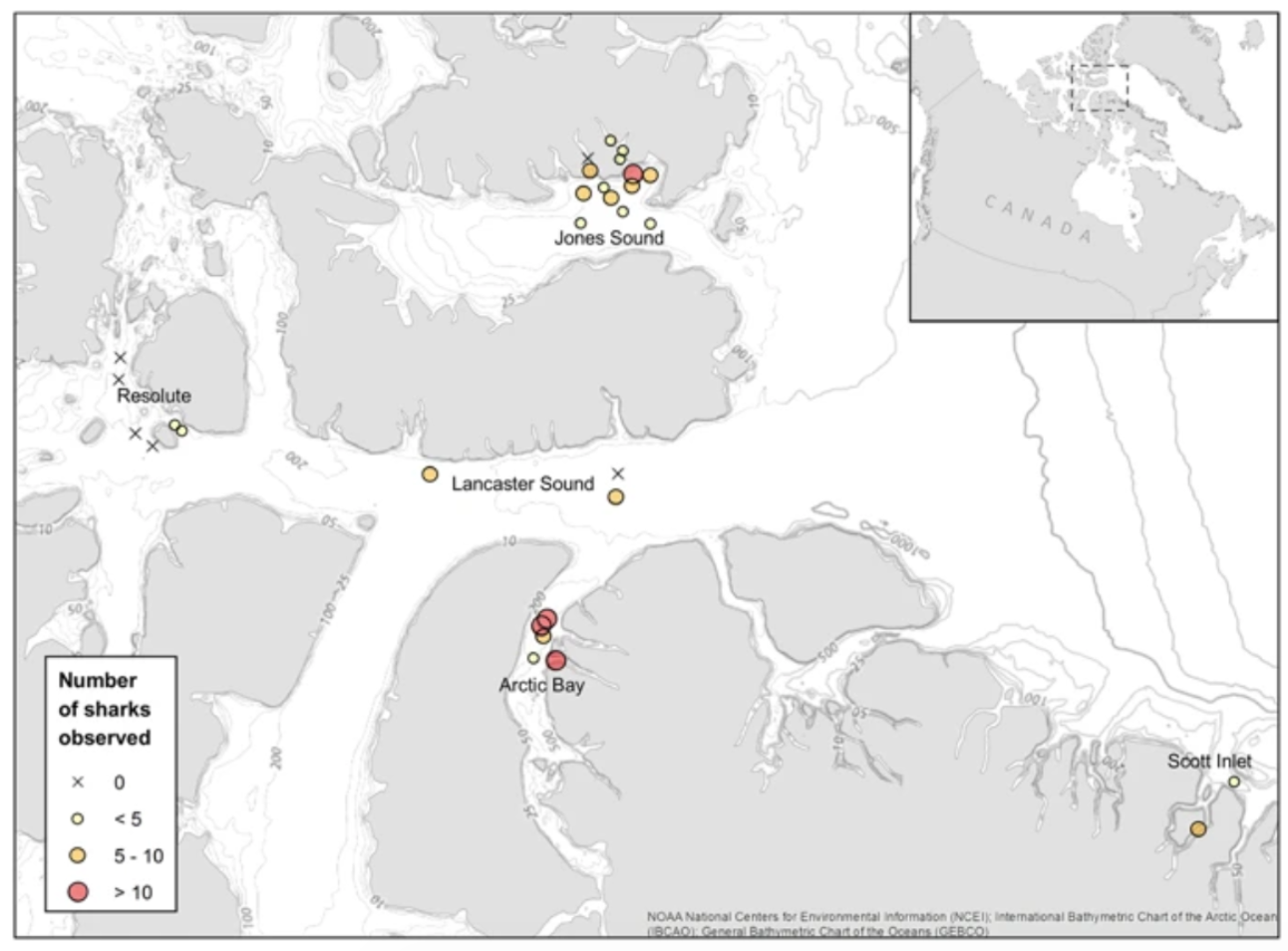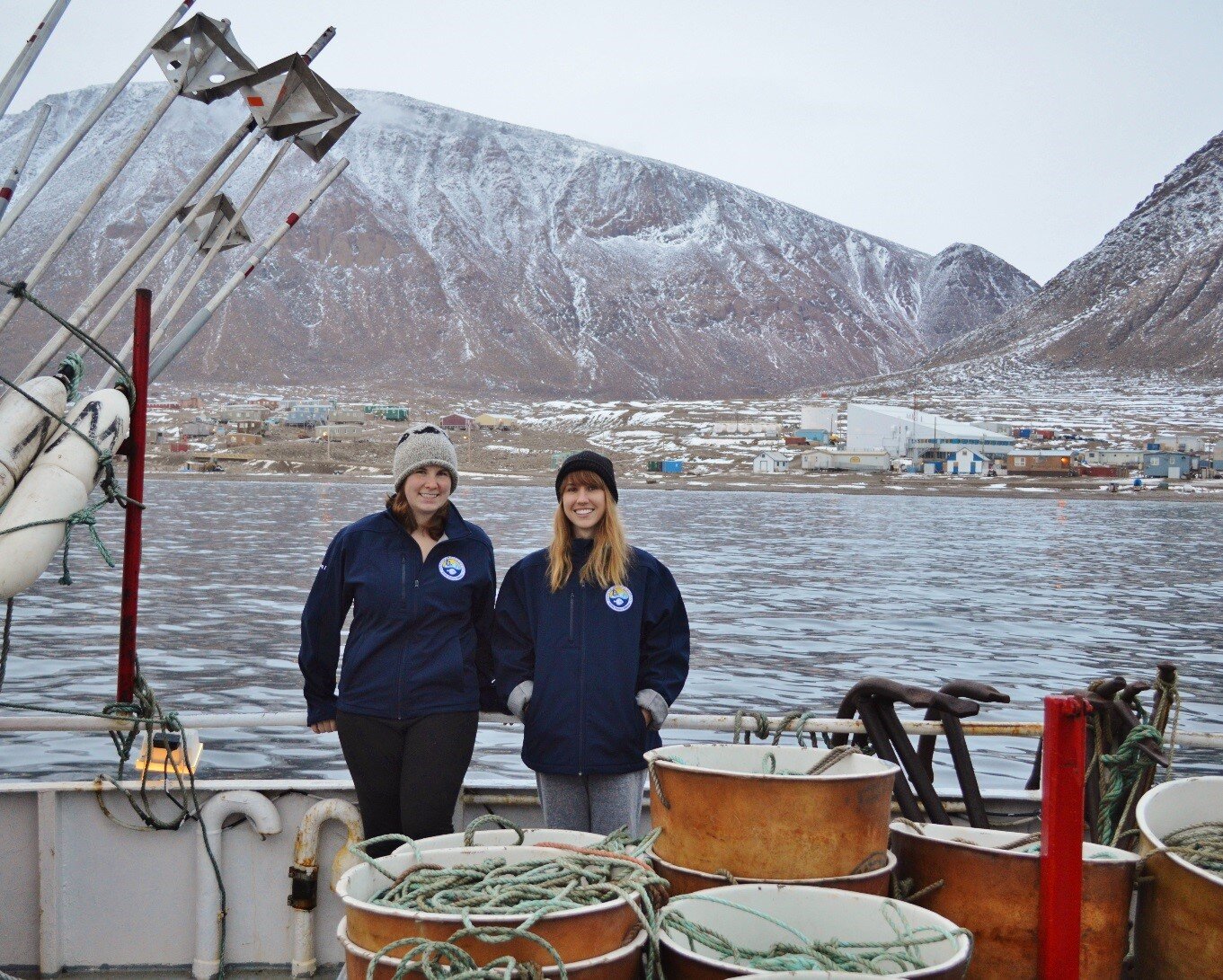Tiburón de Groenlandia filmado con una cámara submarina programable
Potentially living over 400 years, Greenland Sharks have the longest lifespan of any known vertebrate
Using the subsea scripting API on the programmable SubC camera, researchers were able to set up a time-lapse during their deployments
The results of the study illustrate the potential vulnerability of the Greenland Shark
Nuestros amigos del Instituto Marino reunieron 258 horas de metraje como parte de su investigación para estimar las densidades locales del tiburón de Groenlandia(Somniosus microcephalus) en regiones de aguas profundas y con pocos datos de interés para el desarrollo de la pesca y la conservación marina en Nunavut, Canadá.
Blind Sharks with a Long Lifespan
The Greenland Shark is a majestic creature of the deep and one of the very few polar shark species. Potentially living over 400 years, it has the longest lifespan of any known vertebrate. Coming in at 7m long and up to 3100lbs, they are among the largest of sharks. And they’re blind! They aren’t born blind, but, all documented mature Greenland sharks have parasites attached to their eyeballs. Luckily, they have a very keen sense of smell that they rely on to hunt. As an adaptation to living in the deep, they have a high concentration of trimethylamine in their tissues, which causes the meat to be toxic.
This image identifies shark distributions in Lancaster Sound, Nunavut, Canada.
SubC Technology Makes Researching Easier
The study took place between July-September 2015 and 2016. It was conducted by deploying a baited autonomous imaging system -- the SubC Autonomous Camera System -- during joint exploratory fishing and scientific cruises. Using the subsea scripting API on the programmable subsea camera, they were able to set up a time-lapse during their 31 camera deployments. They discovered that the Greenland Shark arrived at 80% of the deployments with 142 individual sharks being identified from the video footage using unique marks on their skin.
Los investigadores Brynn Devine, de la Universidad Memorial, y Laura Wheeland, de Pesca y Océanos de Canadá, pudieron recopilar datos adicionales, como la longitud de los tiburones y la velocidad de natación, a partir de las secuencias de vídeo, utilizando láseres de referencia integrados en la cámara submarina 4K para la escala.
Imágenes de tiburones de Groenlandia atraídos por la cámara con cebo. Consulte el artículo para obtener más información.
The Species’ Vulnerability
"Observamos una amplia gama de tamaños de tiburones, desde longitudes muy superiores a los tres metros hasta tiburones bastante pequeños, de menos de 1,5 metros en una región concreta", dijo la Sra. Devine. "Aunque, sorprendentemente, basándonos en nuestro conocimiento actual del tamaño mínimo de madurez de esta especie, ninguno de los tiburones que observamos tenía probablemente la edad suficiente para reproducirse".
Los resultados del estudio ilustran la vulnerabilidad potencial del tiburón de Groenlandia y que la ecozona de Lancaster Sound de Nunavut puede ser de especial importancia para las especies del Ártico.
Vea una larga muestra de imágenes de tiburones de Groenlandia:
Lea más sobre sus increíbles hallazgos en las siguientes referencias:
Referencias:
Citación: Devine, Brynn & Wheeland, Laura & Fisher, Jonathan. (2018). Primeras estimaciones de las abundancias locales del tiburón de Groenlandia (Somniosus microcephalus) en aguas del Ártico. Scientific Reports. 8. https://doi.org/10.1038/s41598-017-19115-x
Centro de Investigación de Ecosistemas Pesqueros, Instituto Pesquero y Marino de la Universidad Memorial de Terranova. https://www.mi.mun.ca/departments/centreforfisheriesecosystemsresearch/
Wikipedia - Tiburón de Groenlandia: https://en.wikipedia.org/wiki/Greenland_shark



